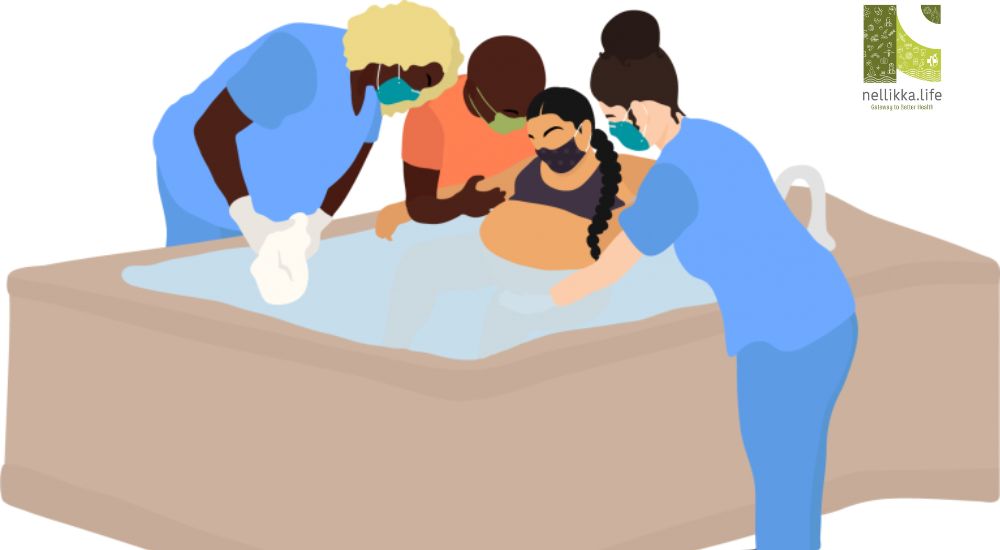Making a Splash: What You Need to Know About Water Births – Benefits, Risks, and Realities

Water birth is becoming an increasingly popular option for expectant mothers seeking a natural and calm childbirth experience. But what exactly is a water birth? Is it safe for the mother and the baby? And how can you decide if it’s the right choice for you?
In this blog, we dive deep (pun intended) into the facts, science, and considerations behind water births.
What is a Water Birth
A water birth involves laboring and/or giving birth in a warm water tub or birthing pool. Some women choose to labor in water and deliver on land, while others give birth directly in the water. The idea is that water provides a soothing, buoyant, and less painful environment for the mother during labor.
Water births can take place at home, in birthing centers, or hospitals that offer water birth facilities.
Potential Benefits of Water Birth
Research and anecdotal evidence suggest multiple potential benefits:
- Pain Relief: Warm water relaxes the body, helping reduce pain naturally by increasing blood flow and lowering muscle tension.
- Less Need for Medical Intervention: Many women report fewer interventions such as epidurals, episiotomies, or C-sections.
- Calmer Birth Environment: The water provides a quiet, dim, and private setting, which may reduce maternal stress.
- Improved Mobility: The buoyancy allows easier movement during contractions and positioning.
- Gentler Transition for Baby: For the newborn, going from amniotic fluid to warm water may feel less abrupt than air.
Risks and Concerns
Despite its benefits, water birth is not without its potential risks:
- Infection Risk: If the tub isn’t sterile or if water enters the birth canal, there is a risk of infection for both mother and baby.
- Umbilical Cord Complications: Rarely, there may be difficulty managing the umbilical cord after the baby is delivered in water.
- Respiratory Issues: While babies are unlikely to breathe underwater due to the dive reflex, improper handling may pose a risk.
- Limited Emergency Intervention: If complications arise, quick transfer out of the tub may be necessary and could delay urgent care.
- Not for High-Risk Pregnancies: Water birth is generally not recommended for women with preterm labor, breech position, twins, or other medical conditions.
What Does the Science Say?
- A 2018 Cochrane Review found that immersion in water during the first stage of labor reduces the use of epidurals and provides greater satisfaction.
- The American College of Obstetricians and Gynecologists (ACOG) states that water immersion during the first stage of labor may be beneficial but recommends caution for water delivery due to insufficient data on safety.
- A 2022 study in the Journal of Midwifery & Women’s Health found no increase in neonatal complications in water births compared to land births under appropriate medical supervision.
Is It Right for You?
Water birth may be a wonderful experience if:
- You have a low-risk pregnancy.
- You are working with a trained midwife or provider comfortable with water births.
- The facility has emergency protocols in place.
- You are well-informed and comfortable with the idea.
It may not be suitable if:
- You have pregnancy complications.
- Your baby is in a non-head-down position.
- There is meconium-stained amniotic fluid.
- You have an infection or fever at the time of labor.
Final Thoughts
Water birth is a unique and empowering birthing option for many women—but it’s not a one-size-fits-all experience. Like any medical decision, it requires proper research, consultation, and a supportive birthing team.
If you’re considering a water birth, speak with your obstetrician or certified midwife to assess whether it’s a safe and viable option for you.
References:
- ACOG Committee Opinion on Immersion in Water During Labor and Delivery
- Cochrane Review: Immersion in water in labour and birth (2018)
- Waterbirth: current knowledge and medico-legal issues
- Women’s experiences of waterbirth: A systematic review with narrative synthesis




